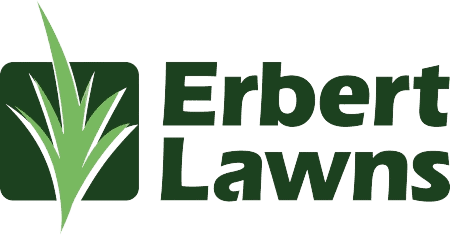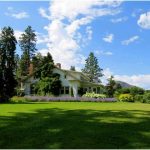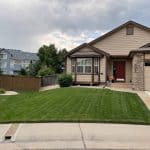Every lawn can benefit from an aeration and overseed. The healthiest lawns receive an aeration in spring and then again in the fall with overseeding. Aerating your lawn really is the best way to maintain healthy and deep roots. A traditional style aeration with a machine is what people are used to seeing but lawn care experts all over the place are starting to realize that liquid aerations are the future of lawn care.
Let’s cover the basics first. Both types of aeration’s purpose is to break up thatch within your lawn. Thatch is a layer of dead grass that lies just above the soil. Thatch serves an important role in your lawn’s health. It provides shade for the roots from the sun and aids in preventing water from evaporating from the soil before the roots can soak it up. Thatch can get too thick though and this is where you run into problems. If thatch is too thick, water and nutrients may be unable to pass through. This leads to shallow roots which in turn makes a lawn prone to stress, disease, and pests. An aeration keeps the thatch in check so your lawn is healthy all year long. We recommend that a thatch layer be approximately half an inch.
Traditional Aeration:
A traditional aeration is typically performed with an aerator machine. These machines are loud and require fuel. While on and running the person performing the aeration will strategically maneuver around a lawn while pushing the machine. Rows of hollow tines line the bottom of the machine. As the tines spin into the ground they will pull up plugs from the soil. After the aeration the lawn will be covered in the soil plugs which will eventually break down. You should never removed plugs after an aeration, they are compose of vital nutrients.
A few downfalls of this type of aeration are the plugs can look a bit unsightly. Sprinkler heads are at risk of being damaged during this service as well as landscaping on the property due to the size of the aerators. To complete the service, if performed in the fall, grass seed will be applied throughout the lawn with special attention on the brown and bare patches. The patchy areas will come back healthy and green in the spring.
Liquid Aeration:
Liquid aerations are quite a bit different. There is no heavy machinery. No soil plugs will be left behind. Your lawn will not look immediately different or unrecognizable after a liquid aeration is performed. While the traditional method breaks up the thatch layer with tines to allow water, air, and nutrients in, the liquid aeration gently penetrates through the thatch layer. As the liquid application is applied it begins to aerate the lawn entirely rather unlike the traditional method.
The application also includes added humic acid and sea kelp to aid in achieving a lush green color by increasing nutrient retention. It is also a wetting agent that penetrates deeply into the soil. This allows water to travel further down which in turn encourages deeper and stronger roots. It really is a package deal. You get far more benefits with a liquid aeration than with a traditional one. You can do a liquid aeration and overseed, similiar to a traditional service.
The temperatures are starting to cool down and fall is just around the corner! Now is a perfect time to scheduled your Fall Liquid Aeration and Overseed to give your lawn a healthy head start for next year!










